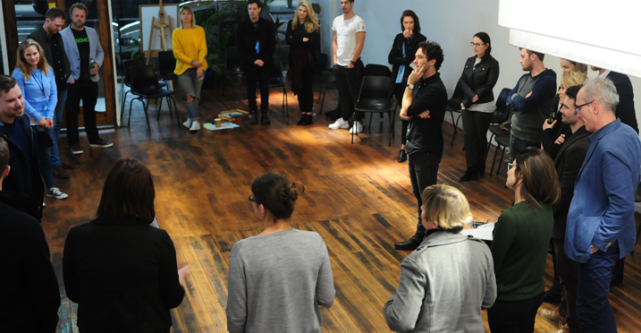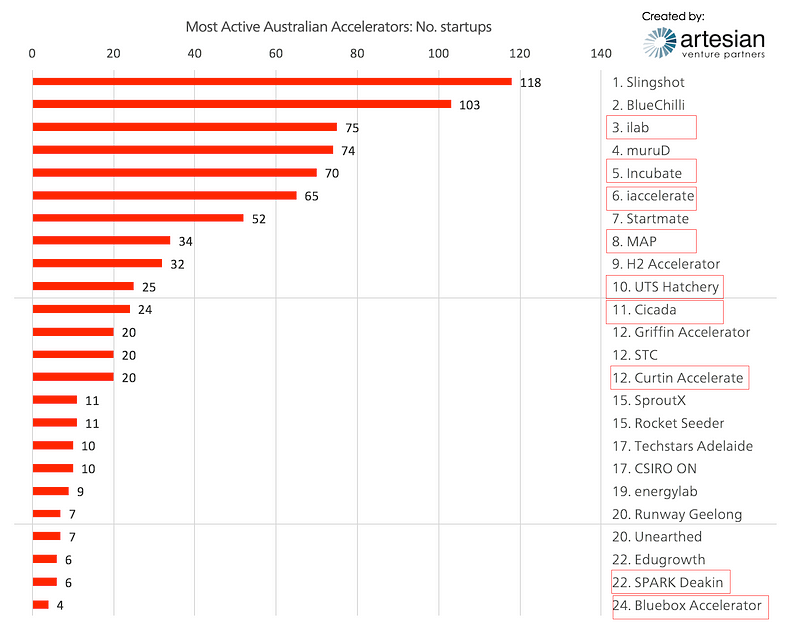
“There’s just too many people signing up. I’m worried I won’t be able to take on more customers,” professed the young startup founder at a recent mentor meeting. “You see, this is a good problem to have!” the mentor proclaimed.
In less than 10 years Australia’s technology startup sector has gone from very little activity to an explosion of people and investment — the ecosystem Down Under is now one of the fastest-growing startup sectors globally.
If you don’t live in Australia it’s hard to describe how different it is today compared with even five years ago (and how quick we are to take it for granted).
Five years ago in Australia:
- VC funds raised $155 million — and there were only three active funds (one of the lowest in OECD countries).¹
- You could count the number of accelerators on one hand (four).
- Our biggest software startup, Atlassian, raised $60 million the year before at a $460 million post-money valuation
- The biggest exit in tech was a software company, Distra, at $46 million. (all 2012—13 divestment value for VC-backed firms was less than $100 million!)¹
In 2018:
- Over $1.5 billion was raised by VC funds in the last two years, including the first $200-million-plus funds. (There are now five funds over 200 million!)²
- There are over 25 accelerators and incubators.³
- Atlassian is currently valued at around $US13 billion and is listed on the NASDAQ, followed more recently by WiseTech on the ASX ($3 billion market cap).
- We’ve had three billion-dollar exits in the past 12 months, the biggest being Aconex at $1.6 billion.
- Investment in startups is growing faster than in Europe or the US — over 65% between CY16 and CY17⁴
Stuff is hot. And getting hotter.
Aussie entrepreneur exits this month
21 Century Fox – $66bn
Westfield – $32.7bn
Aconex – $1.6bn🤑
— James (Galileo VC) (@jamesfromsydney) December 18, 2017
Aussie entrepreneur exits, Jan 2018:
Sirtex Medical – $1.6b AUD
ThreatMetrix – $1.01b AUD🤑
— James (Galileo VC) (@jamesfromsydney) January 31, 2018
Universities back in 2013 …
I started a university accelerator program, and at our first demo day we had two to three VC investors attend. None of them invested in pre-seed companies.
Staff at multiple universities told me, “No students are interested in entrepreneurship. Why bother with student programs?” or, “Don’t waste your time. Young people in Australia are not interested in starting a startup”.
Australia struggled to understand why entrepreneurship was important and why they should care.
Universities today in 2018 …
Higher education in Australia has completely changed. Our last demo day at Sydney University had over 20 VCs and investors attend, representing over $1.5 billion in funds under management.
If you’re a university and don’t have “startup strategy”, it’s dead in the water. And students are paying attention.
UTS has shown up to 40% of students want to start a startup or be involved in one.⁵
For the first time, I have first-year students pitching me their startup ideas before university has even started.
I’ve started to hear startups compare themselves to other established technology companies in Australia!
- “We’re the Canva for video”
- “We’re the Freelancer for marketing jobs”
- “We’re the Atlassian for design teams”
It goes on …

Universities are jumping in and have a significant role to play in Australia
Universities are investing heavily in entrepreneurship and commercialisation. Initiatives are coming from either bottom-up (e.g. student initiatives like Textbook Ventures) or top-down from senior executives. For example, UTS, Monash and UNSW now have deputy vice-chancellors of entrepreneurship.
-
Over $85 million has poured into new university-affiliated startup programs and new buildings in the last five years.⁶
-
Over 73 “startup programs” now operate across Australian universities. Most of these only launched in the last three years.⁶
-
Universities now advertise jobs like “startup program manager” or “director of entrepreneurship”. These jobs did not exist five years ago.
Several universities have launched programs, while others have expanded their program size or added new industry verticals to focus on. Notable new programs include:
- RMIT Activator, which has over $7 million to support entrepreneurship across its campuses, including a new seed fund and city hub;
- UNSW’s Founder 10X, which, along with other initiatives, is a pre-seed accelerator with $20,000 equity-free grants; and
- New Venture Institute of Flinders University and iAccelerate of Wollongong University, which are multimillion-dollar programs with new facilities and a wider community focus.

Australia’s most active accelerators. Red highlighted programs are university affiliated. Source: Artesian.
Half of Australia’s most active accelerators are university affiliated.⁶ These programs are helping seed Australia’s startup sector by supporting entrepreneurs at a very early stage (usually idea to minimum viable product/initial customers).
New accelerators, new problems
No-one can argue that these are not great signs, but many will point out the relatively large number of new players in the space. “They’re inexperienced” or, “they don’t have good mentors”, etc.
Many of these programs are new and have problems of their own, including:
- Working out their funding model;
- Determining optimal program structure;
- Securing follow-on seed funding for companies; and
- Recruiting good mentors.
But as the ecosystem matures and programs graduate more startups, the whole sector will benefit.
While there are always lots of problems, some are good problems to have.
This piece was originally published on Medium and was republished with permission.
Sources:
- AVCAL 2013 Yearbook
- AVCAL 2018
- Artesian Most Active Accelerators
- Dominic Creardon, Boom Town, Baby!
- UTS Student Research
- Galileo Ventures research
NOW READ: Here are Australia’s 24 most active startup accelerators and incubators


COMMENTS
SmartCompany is committed to hosting lively discussions. Help us keep the conversation useful, interesting and welcoming. We aim to publish comments quickly in the interest of promoting robust conversation, but we’re a small team and we deploy filters to protect against legal risk. Occasionally your comment may be held up while it is being reviewed, but we’re working as fast as we can to keep the conversation rolling.
The SmartCompany comment section is members-only content. Please subscribe to leave a comment.
The SmartCompany comment section is members-only content. Please login to leave a comment.